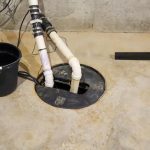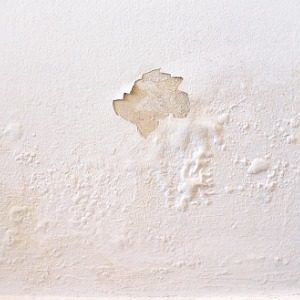In Canada, where weather conditions can be harsh and unpredictable, homeowners are often faced with a variety of wet basement problems. These issues can range from minor annoyances to major concerns, affecting not only the usability of the space but also the health of the occupants and the overall value of the property.
Understanding and addressing basement moisture problems is essential for ensuring a safe, dry, and comfortable living environment.
Common Causes for Wet Basement Problems
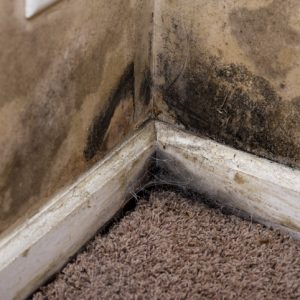 Basements can become wet for a variety of reasons, many of which are related to the interaction between the structure of the home and the surrounding environment. Some of the most common causes include:
Basements can become wet for a variety of reasons, many of which are related to the interaction between the structure of the home and the surrounding environment. Some of the most common causes include:
- Foundation Cracks
Over time, the foundation of a home can develop cracks due to settling, shifting, or exposure to extreme weather conditions. These cracks can allow water to seep into the basement, leading to moisture problems. - Poor Drainage
Inadequate drainage around the home can cause water to pool near the foundation, increasing the risk of water intrusion. This can be due to clogged gutters, improper grading, or insufficient drainage systems. - Sump Pump Failure
Sump pumps are designed to remove water that accumulates around the foundation, but if they fail or are overwhelmed, water can enter the basement. - Window Well Leaks
Window wells can collect water during heavy rain or snowmelt, which can then leak into the basement through gaps or cracks around basement windows. - Plumbing Leaks
Leaky pipes or fixtures within the home can cause water to accumulate in the basement, leading to moisture issues and a wet basement. - Condensation
High humidity levels in the basement can lead to condensation on cool surfaces, such as walls and pipes, contributing to a damp environment.
Problem #1: Foundation Cracks
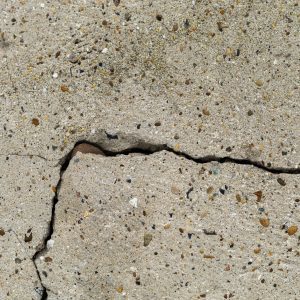
DIY Solutions
- Visual Inspection: Regularly inspect your foundation for any new cracks or changes in existing ones.
- Seal Minor Cracks: For small, non-structural cracks, you can use a waterproof masonry sealer or epoxy injections to fill and seal the gaps.
- Improve Drainage: Ensure that gutters are clean and downspouts direct water away from the foundation. Proper grading around the home can also prevent water from pooling near the foundation and a wet basement.
Professional Repair Options
- Structural Assessment: If you suspect that the cracks may be affecting the structural integrity of your home, it’s essential to consult a structural engineer or foundation repair specialist for a thorough assessment.
- Injection Repair: Professionals can use polyurethane or epoxy injections to permanently seal foundation cracks, preventing water intrusion.
- Exterior Waterproofing: In some cases, exterior waterproofing may be necessary to address the root cause of the water infiltration. This can involve excavating around the foundation and applying a waterproof membrane to the exterior walls.
It’s important to address foundation cracks promptly to prevent further damage and ensure the long-term stability of your home. If you’re unsure about the severity of a crack or the best repair method, consulting with a professional like Crackmasters is always recommended. With our expertise in basement waterproofing and foundation repair, we can provide the guidance and solutions you need to keep your home safe and dry.
Problem #2: Poor Drainage
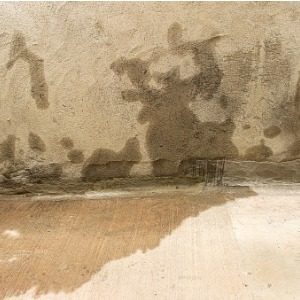
Improper drainage around a home can lead to water accumulating near the foundation, which can then seep into the basement. This can occur due to several factors, such as clogged gutters, inadequate slope away from the house, or poorly designed landscaping. Over time, this water buildup can lead to various problems, including foundation damage, basement flooding, and mold growth.
Tips for Improving Drainage Around the Home
- Clean Gutters Regularly: Ensure that your gutters are free of debris like leaves and twigs, which can block water flow and cause overflow near the foundation.
- Extend Downspouts: Downspouts should extend at least 4-6 feet away from the house to direct water away from the foundation effectively.
- Grade the Landscape: The ground around your home should slope away from the foundation to prevent water from pooling near the walls. A slope of at least 6 inches over 10 feet is recommended.
- Install French Drains: If you have persistent drainage issues, consider installing a French drain system around your home. This involves creating a trench filled with gravel and a perforated pipe that redirects water away from the foundation.
- Use Rain Barrels: Collecting rainwater from downspouts in barrels can reduce the amount of water that accumulates near your foundation.
- Maintain Proper Soil Moisture: Keep the soil around your home consistently moist, as dramatic changes in soil moisture can cause expansion and contraction, leading to foundation movement and cracks.
Problem #3: Sump Pump Failure
A sump pump is a critical component in preventing basement flooding, especially in areas prone to high water tables or heavy rainfall. It is typically installed in the lowest part of the basement or crawlspace, in a pit known as a sump pit. The pump activates automatically when water fills the pit, pumping the water out and away from the home’s foundation. By doing so, it helps prevent a wet basement and water damage.
Maintenance Tips
- Regular Testing: Test your sump pump every few months by pouring a bucket of water into the sump pit. The pump should activate, remove the water, and then turn off.
- Clean the Sump Pit: Remove any debris or sediment that may have accumulated in the pit to ensure smooth operation.
- Check the Discharge Line: Ensure that the discharge line is clear of obstructions and that water can flow freely away from the house.
- Battery Backup: Consider installing a battery backup system for your sump pump. This will ensure that the pump continues to operate during power outages, which often accompany heavy storms.
Signs of Failure
- Noisy Operation: Unusual noises, such as grinding or rattling, can indicate a problem with the pump’s motor or impeller.
- Continuous Running: If the pump runs continuously without shutting off, it may be a sign of a malfunctioning switch or a problem with the water discharge.
- Frequent Cycling: If the pump turns on and off more frequently than normal, it could be a sign of a faulty float switch or an incorrect pump size for your needs.
- Visible Water: If water is not being effectively removed and starts accumulating in the basement, it’s a clear sign that the sump pump is not functioning correctly.
Regular maintenance and monitoring are essential to ensure that your sump pump remains in good working condition, ready to protect your basement from flooding. If you notice any signs of failure, it’s important to address them promptly to prevent potential water damage.
Problem #4: Window Well Leaks
Window well leaks can occur for several reasons, leading to water seeping into the basement through or around basement windows.
Common for Window Well Leaks
- Poor Drainage: If the window well lacks proper drainage, rainwater or melting snow can accumulate and eventually seep through window seals or cracks.
- Clogged Drain: Window wells often have a drain to channel water away. If this drain becomes clogged with debris, water can build up and cause leaks.
- Improper Installation: Incorrectly installed window wells may not provide adequate protection against water intrusion. This can include issues with the well’s depth, size, or attachment to the foundation.
- Cracked or Damaged Wells: Over time, window wells can develop cracks or become damaged, allowing water to enter and causing a wet basement.
Prevention and Repair Strategies
- Regular Cleaning: Keep window wells clear of leaves, dirt, and debris to ensure proper drainage.
- Inspect and Repair Drains: Check the drains in your window wells regularly and clear any blockages. If the drain is damaged, it may need to be repaired or replaced.
- Install Window Well Covers: Clear plastic covers can help prevent water accumulation in window wells while still allowing light into the basement.
- Regrade Around the Well: Ensure that the ground around the window well slopes away from the house to prevent water from pooling.
- Seal Window Edges: Apply a waterproof sealant around the edges of basement windows to prevent water from seeping through.
- Check and Repair Window Well Liners: Inspect the liners of your window wells for cracks or damage and repair or replace them as necessary.
Problem #5: Plumbing Leaks
Plumbing leaks can be a significant source of moisture in basements, often going unnoticed until they cause visible damage. These leaks can originate from various sources, including pipes, fixtures, and appliances.
Identifying Signs of Plumbing Leaks
- Water Stains: Look for discoloration on walls or ceilings, indicating the presence of water.
- Musty Odors: A persistent musty smell can suggest hidden moisture from a leak.
- Mold Growth: The appearance of mold, particularly in areas not prone to dampness, can signal a leak.
- Unexplained Increase in Water Bills: A sudden spike in your water bill without a corresponding increase in usage can be a sign of a leak.
Steps to Locate and Fix Plumbing Issues
- Visual Inspection: Regularly inspect exposed pipes, faucets, and appliances for signs of leaks, such as water stains, corrosion, or dripping water.
- Listen for Leaks: In quiet moments, listen for the sound of running water or dripping when no faucets or appliances are in use. This could indicate a hidden leak.
- Check Water Meter: Turn off all water-using appliances and fixtures, then check your water meter. If it continues to move, you may have a leak.
- Use Dye Tests: For toilets, add a few drops of food coloring to the tank. If the color appears in the bowl without flushing, there’s a leak in the toilet.
- Monitor Water Bills: An unexpected increase in your water bill can be a sign of a leak somewhere in your plumbing system.
- Professional Inspection: If you suspect a leak but can’t locate it, consider hiring a professional plumber to perform a thorough inspection using specialized equipment.
Once a leak is identified, it’s important to address it promptly to prevent further damage. For minor leaks, you may be able to perform repairs yourself, such as replacing worn washers or tightening connections. However, for more significant issues or if you’re unsure how to proceed, it’s best to seek the assistance of a professional plumber to ensure a proper fix.
Problem #6: Condensation
Condensation occurs when warm, moist air comes into contact with cooler surfaces, such as basement walls or pipes. This temperature difference causes the moisture in the air to condense into water droplets.
In basements, common sources of moisture include humid outdoor air, drying clothes, or even activities like showering and cooking that increase indoor humidity. Poor ventilation can exacerbate the issue, as it allows moisture-laden air to stagnate and cool against basement surfaces, leading to condensation.
Solutions to Reduce Humidity and Prevent Condensation
- Improve Ventilation: Ensure proper airflow in your basement by installing vents or using fans to circulate air and reduce humidity levels.
- Use a Dehumidifier: A dehumidifier can effectively remove excess moisture from the air, helping to prevent condensation. Choose a unit appropriate for the size of your basement and maintain it regularly.
- Insulate Pipes: Cover cold water pipes with insulation to prevent condensation from forming on their surfaces.
- Seal Cracks and Gaps: Prevent outdoor moisture from entering your basement by sealing cracks in walls and around windows and doors.
- Maintain Gutters and Downspouts: Ensure that your gutters are clean and downspouts direct water away from your foundation to reduce moisture around your basement.
- Monitor Indoor Activities: Be mindful of activities that generate humidity, such as drying clothes indoors or cooking without proper ventilation. Use exhaust fans or open windows to vent moist air outside.
Preventing a Wet Basement
Addressing wet basement problems is crucial for maintaining the structural integrity, health, and comfort of your home. Ignoring these issues can lead to more severe damage, costly repairs, and potential health risks due to mold and mildew growth. By being proactive and tackling problems like foundation cracks, poor drainage, sump pump failure, window well leaks, plumbing leaks, and condensation, you can protect your home and ensure a dry, safe living environment.
Taking steps to prevent and repair wet basement issues not only enhances your home’s value but also provides peace of mind knowing that your living space is protected from water damage. Whether you choose to implement DIY solutions or seek professional assistance, the key is to act promptly and effectively to keep your basement dry and healthy.
If you’re facing wet basement challenges and need expert assistance, reach out to Crackmasters. With years of experience in basement waterproofing and repair, our team is equipped to provide you with effective solutions tailored to your specific needs.
Don’t let wet basement problems dampen your home’s comfort and safety. Contact Crackmasters for reliable and professional support in keeping your basement dry and secure.
Recent Posts
Ready to Sell? Common Basement Issues to Fix Before Listing
Preparing to sell your home involves more than just staging the living spaces and enhancing
Steps for a Comprehensive Basement Health Audit
Often overlooked, a healthy basement is a vital contributor to a safe and comfortable home
Common Causes of Foundation Leaks
Maintaining a dry basement is crucial not only for comfort but also as a fundamental

